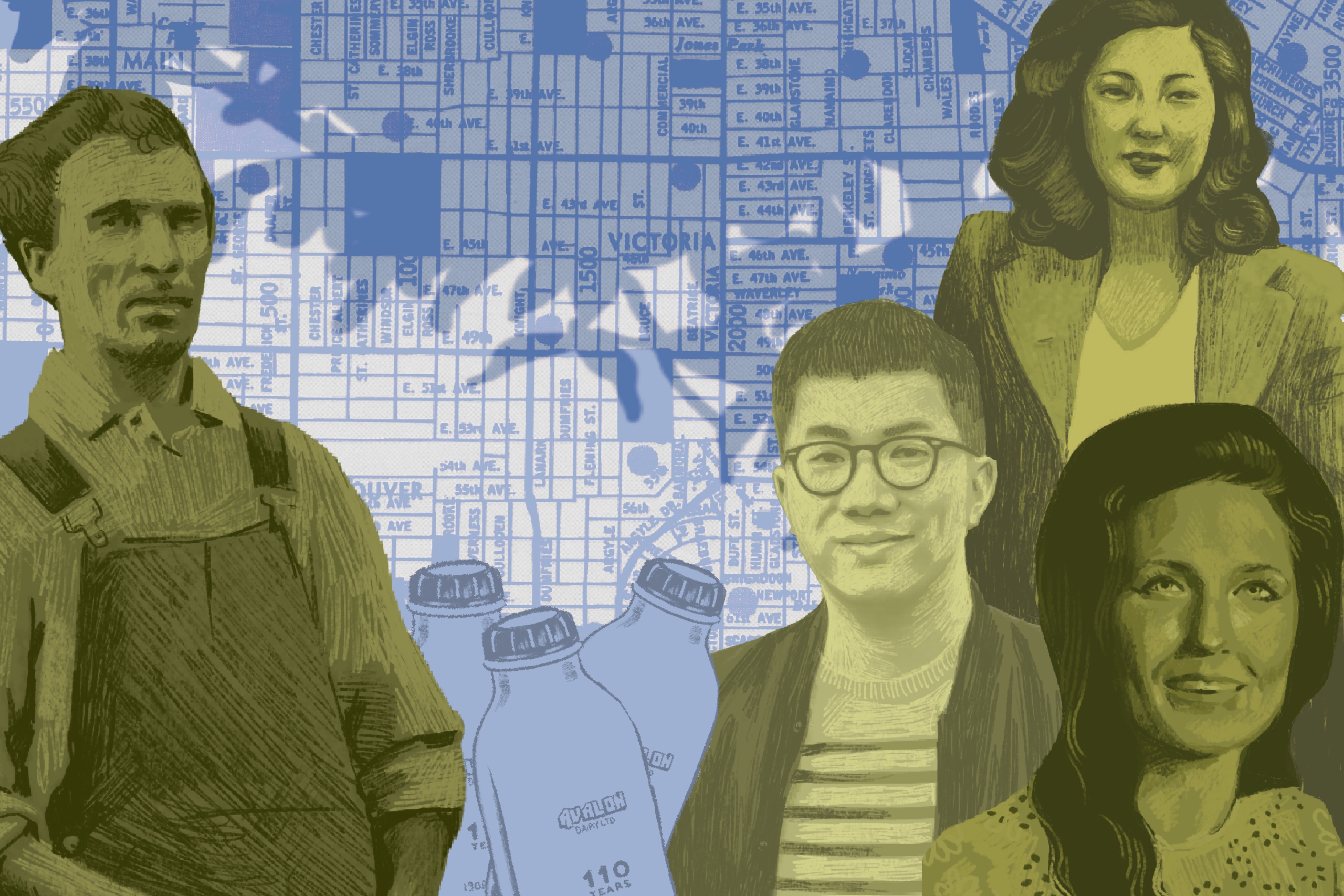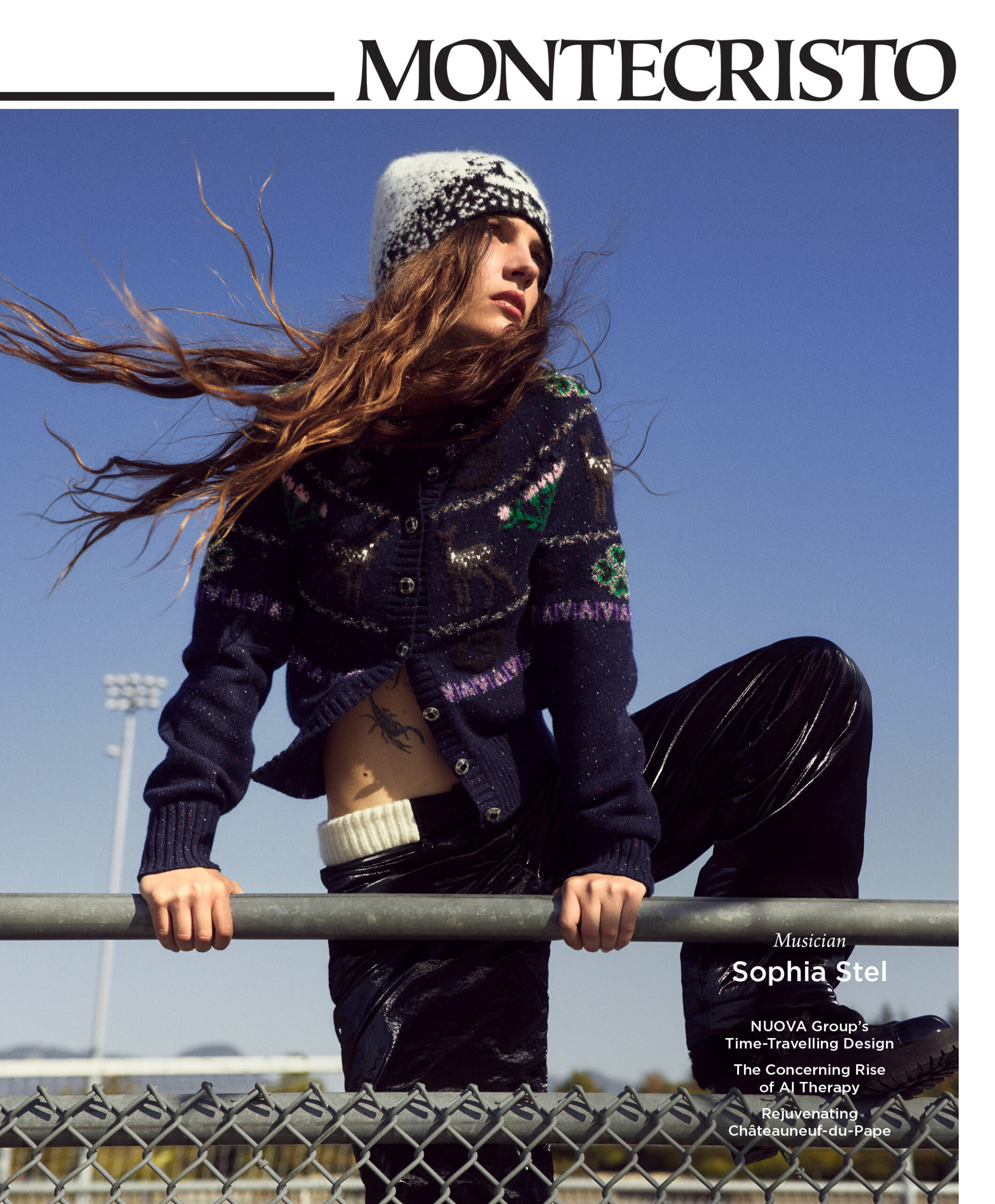This story is the 18th in our series on the hidden history of Vancouver’s neighbourhoods. Read more.
In 1959, as Victoria-Fraserview transitioned from agricultural backwater to upstart residential area, an aspiring country singer with a voice reminiscent of Kitty Wells crossed the border from Custer, Washington, to play at the Chicken Coop, a barn turned jam space and dance hall on Kent Avenue near Elliott Street.
The Kentucky-born singer—who’d married as a teen and was a mother of four by 20—had recently won a televised singing contest hosted by Buck Owens. Watching that performance was Vancouver lumber magnate Norman Burley, who’d once co-owned the Vancouver Mounties baseball team with Nat Bailey.
At the Chicken Coop, the singer performed in front of two executives at Zero Records, the music label Burley bankrolled (another backer was future Vancouver mayor Art Phillips). These VIPs were impressed enough to sign her to the label, which pressed 3,500 copies of her first record, “I’m a Honky Tonk Girl” backed with “Whispering Sea,” in 1960. By the end of that year, Loretta Lynn, the singer featured at the Chicken Coop, would be playing Nashville’s Grand Ole Opry.
It’s not especially likely that another country music icon will cut their teeth in Victoria-Fraserview, an area that slopes down until it touches the Fraser River to the south and is bounded by East 41st Avenue to the north, Knight Street to the west, and Elliott Street, Vivian Drive, and Earles Street to the east. One of the city’s most affordable neighbourhoods, teeming with Vancouver Specials, Victoria-Fraserview doesn’t occupy much psychic real estate for Vancouverites elsewhere in the city; the only time they’ll spend there is when they’re stuck behind a tractor trailer en route to the Knight Street Bridge. But for over half a century, this South Vancouver area has offered people—be they war veterans, or immigrants from Hong Kong, Vietnam, and India—a place to start their lives in the city.
Related stories
- B.C.’s Original, Independent Farm-to-Table Dairy, and Its Iconic Milk Bottles
- Why So Much Canadian Crime Fiction Is Set in Vancouver
- Could Vancouver’s Historic Corner Markets Make a Comeback?
Traditionally, the area has been Musqueam territory, and a village was once located at the south end of present-day Victoria Drive. European settlement began midway through the 19th century, with land cleared for farming and sawmills and other industrial businesses opening along the river. One of the area’s earliest farmers was Jeremiah Crowley, who was a metal worker by training. Born on Newfoundland’s Avalon Peninsula in 1875, Crowley originally came west for the gold rush but, in 1906, bought a farm with six cows on it, where Norquay Park presently stands.
Three years later, with Crowley’s family growing to include seven children, they moved their home and business nine blocks south, and into Victoria-Fraserview, settling operations at 5805 Wales. Through economic downturns that pushed Crowley into debt and a case of bovine tuberculosis that forced him to cull an entire herd, Avalon Dairy persisted, delivering milk by horse-drawn wagon until 1953 and continuing as a family-run operation for generations. Its iconic glass bottles, adopted in 1915—customers previously had to fill their own pails and jugs at the milk wagon—can still be found in stores today.
While a handful of heritage houses exist from Jeremiah Crowley’s era, including a now-subdivided farmhouse from 1911 and the Cooper House, which was built in 1919, both on Wales Street, the homes of Victoria Fraserview were mostly erected after the Second World War when the Central (now Canadian) Mortgage and Home Corporation expropriated land in the area to build over 1,000 new homes for returning war veterans.
Such a major change to the area did not go unnoticed by the Fraserview Property Owners’ Association, which disputed the settlements offered to existing land owners. Some members even stood guard outside a property owned by a couple named Francis at 2360 East 63rd Avenue in May 1949. According to a report by the Vancouver Sun, the Francis’s “empty chicken house was pushed 100 feet … by a bulldozer and ended up, partly demolished, on a pile of torn-up trees.” The chicken coop, it seems, was the laneway house of pre-urban Vancouver.
Nicknamed “Diaper Town,” Victoria-Fraserview welcomed families like those of Kenneth Andrew Creamore, who was born in 1955. In his memoir, My Stuff and Welcome to It, the computer software professional recalls childhood games of kick the can and road hockey, and the fun of climbing the rock retaining walls that kept lots level against the neighbourhood’s south slope. “We knew every rock in those walls. Every hole to place your foot, every stone to cling to, and most importantly every crevice that the snakes lived in. I don’t believe the city planners realized how much fun they built into that subdivision.”
Many Victoria-Fraserview kids attended Tecumseh Elementary, where they might have been taught or attended a dance or sports day organized by Vivian Jung. In 1945, a 21-year-old Jung protested until she could use Sunset Beach’s whites-only Crystal Pool, where she needed to complete swim training for her teaching certificate. In 1950, she started at Tecumseh, where she remained for 35 years, becoming the Vancouver School Board’s first Chinese Canadian teacher. In 2017, three years after her death, the City recognized this trailblazer by naming a West End laneway after her and formally apologizing for its past history of racial segregation.
A few blocks from Tecumseh, a commercial strip that runs along Victoria Drive, from East 41st to East 45th Avenue, highlights the area’s evolution. In a 2012 Vancouver Sun column, Shelley Fralic, who grew up in Victoria-Fraserview during its postwar heyday, bemoaned the businesses of her youth that had vanished from that stretch: “One by one, everything tangible that had framed the history of my youth disappeared.… Reid’s Art Materials, gone. The Lion’s Drive-In, gone. Hampton’s Jewellers, gone. Spools Lumber, gone. Copp’s Shoes, gone. Bonnet’s Furniture, gone. Kelman’s Pet and Garden Shop, gone. Sweet 16, gone. The Strawberry Lane Restaurant, gone. The penny candy store, hair salon, bakery, florist. Gone, gone, gone and gone.”
Changing demographics—54 per cent of Victoria-Fraserview’s residents are ethnically Chinese, and 84 per cent belong to a visible minority group—have been responsible for the turnover in businesses. “We’re our own little community,” muses Mrs. Lin, a Chinese senior running a medical insurance scam in S.G. Wong’s story “Survivors’ Pension” in the crime anthology Vancouver Noir. “The fishmonger’s got as fresh as anyone in Chinatown and he’s not a forty-minute bus ride away.… We have an apothecary when we want herbal remedies, and a London Drugs when we want the other stuff.”
In celebrating his stint as a renter in Victoria-Fraserview in 2020, Christopher Cheung sketched a portrait of the city beyond the usual metonymy of bike lanes and yoga pants: “Victoria-Fraserview’s version of Vancouver looks like this. Among the international crowd at the local Starbucks, a group of Vietnamese men hold boisterous communion over drip coffee on Saturday mornings. Women run on the track at Killarney Secondary while blasting Cantonese opera from cassette players, passing Punjabi grannies strolling in salwar kameez and Nikes with their grandkids.”
While Victoria-Fraserview might be largely unrecognizable to those who grew up there in the 1950s and 1960s, it still ranks second among Vancouver neighbourhoods for average household size (3.0, behind only Sunset) and percentage of households with families (52%, just behind Dunbar-Southlands). Once a family neighbourhood, forever a family neighbourhood.









